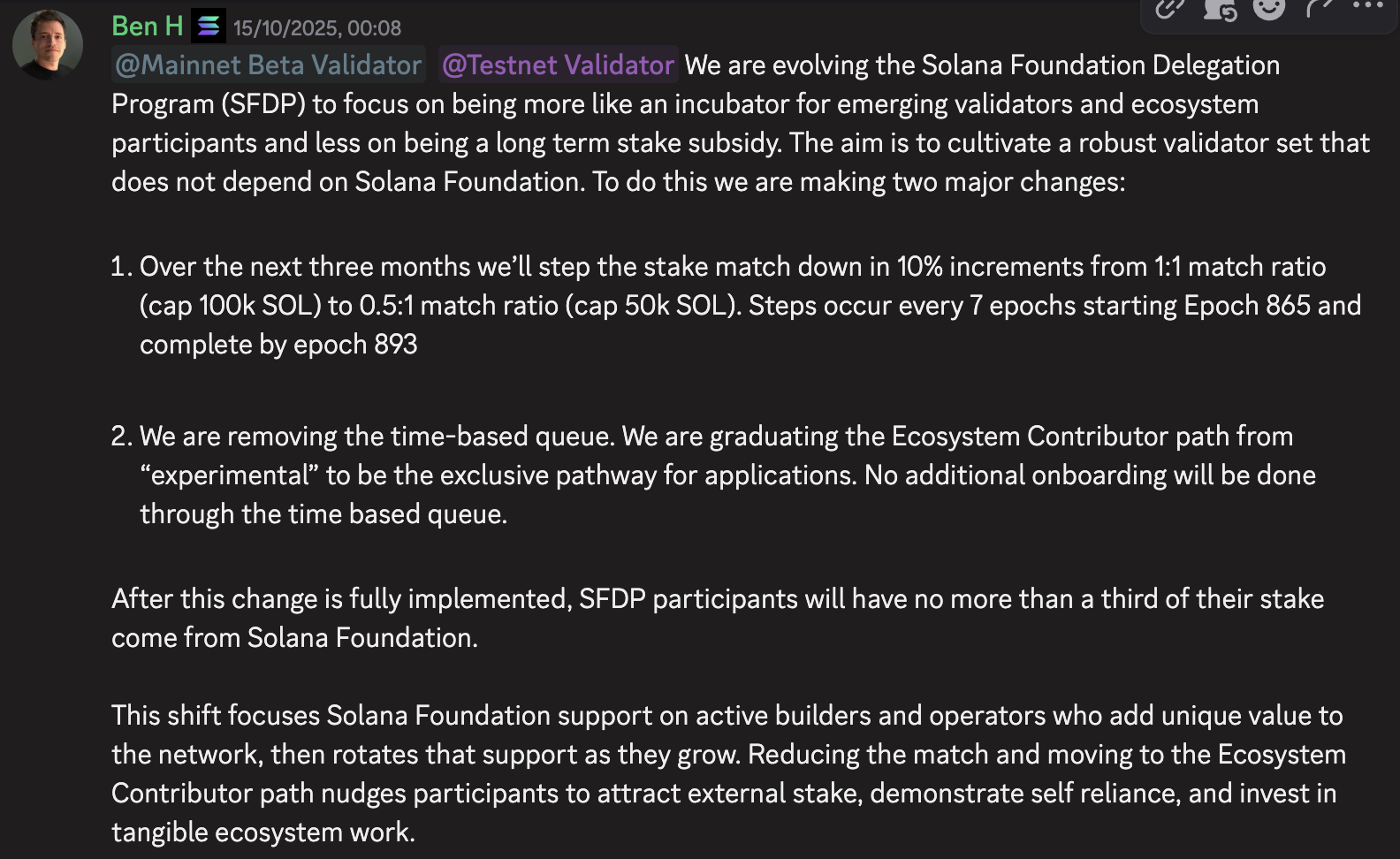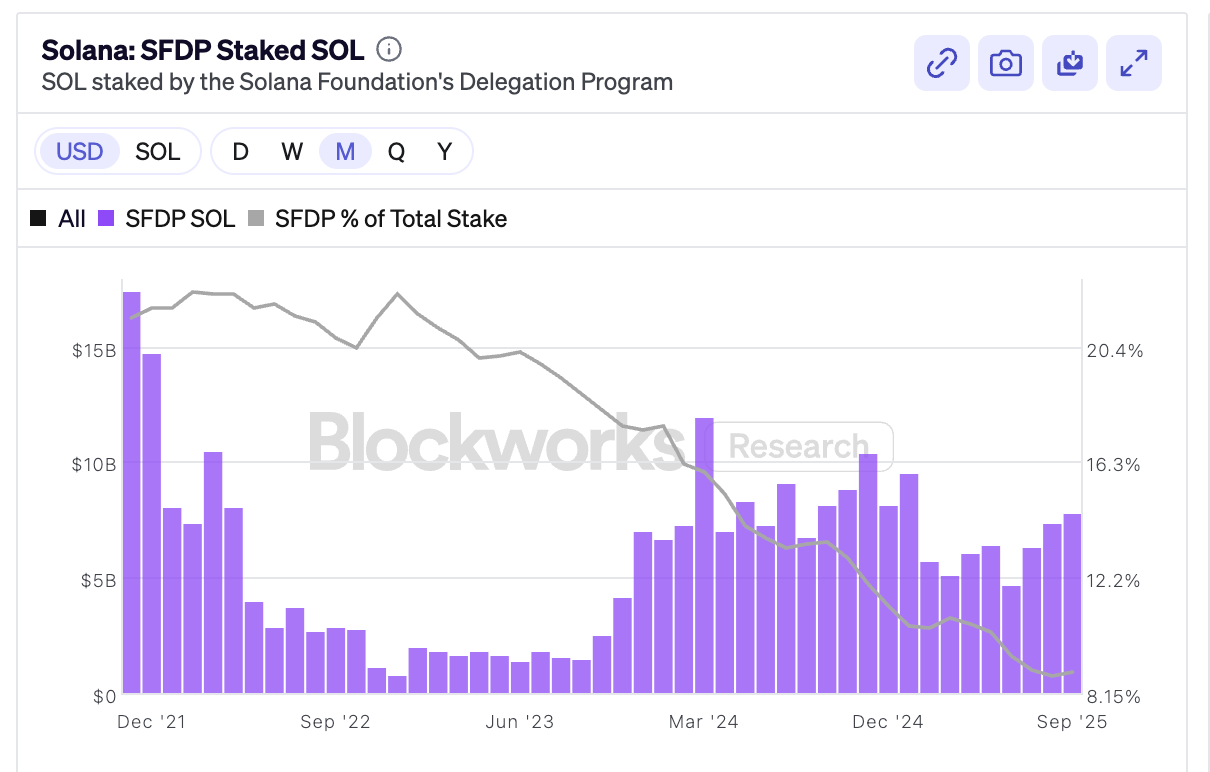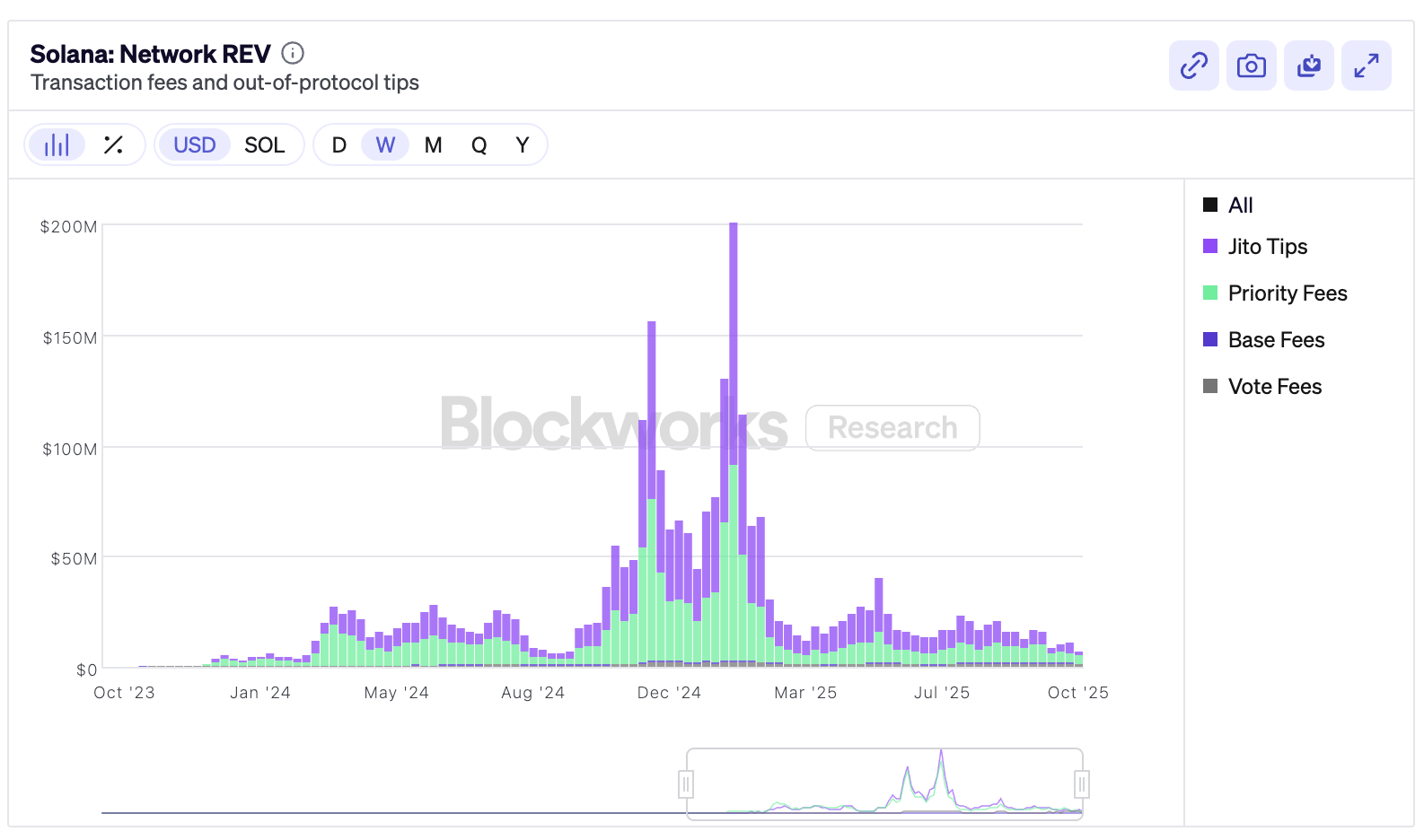
Do We Need to Be Worried About Solana’s Declining Validator Count?
Solana’s validator count is down 33% YTD, and a fix isn’t coming anytime soon.
- Published:
- Edited:
Validators are the lifeblood of the Solana network. They process transactions, secure and govern the chain, and distribute staking rewards to network contributors. At the risk of sounding dramatic, without validators, Solana wouldn’t exist, and none of us would be here.
But despite the essential role they play, Solana’s validator count is diminishing, and it's hardly a new phenomenon. The number of active validators has been in decline for over two years, with potentially dangerous consequences if left unaddressed.
What’s causing operators to pack up shop and wind down validators? What are the risks a low count poses to Solana’s health, and what’s being done to make validator operation appealing again?
Solana Validator Count in Steady Decline
It’s no secret that running a Solana validator offers a wealth of benefits. Operators enjoy the purest form of staking yield, boosted Quality of Service (depending on stake), and full voting rights on all the biggest decisions guiding the network’s future direction.
But despite the perks, Solana’s validator count is steadily dropping. After peaking at around 2,560 nodes in early 2023, the number of live operators now stands at just 906, representing a 33% drop in 2025 alone.

Theoretically, a declining validator count threatens Solana’s decentralization and network security. Stake is consistently concentrated in the hands of a select few operators, giving entities like Binance, Helius, Figment, and Jupiter tremendous influence over the network. After reaching as high as 34 in 2023, Solana’s superminority, or the smallest possible number of validators that could collude to halt or censor the network, now sits at just 20.

While that sounds scary on paper, the chances of this actually happening are near zero. All Solana’s top validators literally have billions at stake in the system, so it would be extremely self-destructive to deliberately cause problems.
Despite popular opinion, a declining validator count isn’t necessarily a bad thing. Sol Strategies CTO Max Kaplan argues that a big part of the downturn comes from malicious actors and sandwichers being methodically purged from the system.
"When looking at [a declining validator count] in isolation, it can be viewed as negative. Pulling back the curtain however, you'll see that this is largely due to the fact that stake pools have managed malicious sandwichers more proactively and the Foundation has been reducing the amount of stake they delegate to validators in SFDP. If I had to choose between having a higher validator count with many sandwichers vs a lower validator count with fewer sandwichers, I'd take the latter every day." - Max Kaplan, Sol Strategies CTO
Kaplan posits that having a higher count doesn’t necessitate a ‘better’ network. To the investor’s eye, the difference between 500 and 1,000 is negligible, and a smaller count could actually benefit Solana’s performance. Kaplan further asserted that network participants should consider allocating their stake to independent validators who align with their beliefs.
“While the validator count is trending downwards, I don't think there's any investor out there that would value Solana greatly more if it had 1k validators over 500. 500 is orders of magnitude better than 1, which is the world of tradfi. Although I think Solana will be more than fine (could even argue better), there are many extremely strong independent validators in the community that I encourage the community to support.” - Max Kaplan, Sol Strategies CTO
Of course, eliminating malicious actors from stake pools is only one piece of the puzzle.
Solana Foundation Winding Down Delegation Program
Another contributing factor to the decline is the unwinding of the Solana Foundation’s validator subsidies. In an attempt to kickstart widespread validator operation across the network in its infancy, the SFDP (Solana Foundation Delegation Program) covered costs for newer and smaller nodes and helped bolster the stake of emerging operators.
The role and responsibilities of the SFDP have been changing in recent months, but throughout 2024, and much of 2025, the SFDP operated as follows:
Alongside 1:1 stake matching for eligible validators with less than 100,000 $SOL in stake, the SFDP also assisted new validators with voting costs. Starting from full coverage, the Foundation helped young validators during the first 180 epochs of their lifespan.

More recently, the SFDP has committed to steadily winding down its subsidies to emerging validators, behaving more like an incubator. Formerly 1:1, the SFDP’s matching ratio will incrementally drop every 7 epochs, eventually matching stake at 0:5:1.

Even before the Solana Foundation began steadily winding down support for its Delegation Program, onchain data indicated that the network may have no longer needed it.

Blockworks data suggests that the SFDP’s share of stake has dropped from 22.26% in December 2022 to just 8.95% today. However, while the SFDP’s share of stake is on the smaller side, Foundation data suggests that 54% of all Solana validators receive support through the SFDP.
Echoing Kaplan's Sentiments, Phase Labs co-founder and CMO Seb Moriarty reinforced the notion that a declining validator count isn't as threatening as people might think. Moriarty opined that the SDFP's shift to becoming an incubator will help to nurture committed and motivated operators, as opposed to giving handouts to low-effort validators.
"At Phase Labs, we don’t believe the validator count dropping 33% year-to-date, nor the recent SFDP changes, pose any significant security risk. Solana’s validator set remains highly resilient and geographically diverse. That said, competition and accessibility are essential. The incubator aspect of SFDP will hopefully play a crucial role in providing new and motivated validators with a fair opportunity to compete. Removing small operators who show no effort is healthy, however ensuring a path exists for new entrants attempting to compete is equally important. We believe initiatives like Aero and other stakepools can help fill this gap by supporting validators who demonstrate clear alignment with the network’s growth and long-term success." - Seb Moriarty, Phase Labs co-founder and CMO
Alpenglow Fixes Costs, But Not Anytime Soon
For all the promises of generous staking yield, validator operation certainly isn’t as lucrative as some seem to think. Voting on consensus is still a significant financial barrier for smaller operators.
Performant validators can submit up to 216,000 vote transactions per day, which can cost up to 394.2 $SOL ($76k at today’s prices) annually. This makes survival exceptionally difficult for smaller validators, for whom 394 $SOL represents an outsized share of their bottom line.
Coupled with the fact that Solana’s network REV has dropped significantly since its peak, validator operation simply isn’t as lucrative as it once was.

Fortunately, a fix is on the way. Anza’s Alpenglow update, which almost unanimously passed in governance proposal SIMD-0326, is expected to eliminate voting costs.
Solana Foundation CEO Dan Albert argues that Alpenglow “could unblock a lot of new entrants into the validator ecosystem.
"When it comes to economics, Alpenglow will help when it goes live but its VAT system will still require evolution and iteration. In general, maintaining an environment that balances opportunity, accountability, and decentralization will remain essential to Solana’s continued progress." - Seb Moriaty, Phase Labs co-founder & CMO
While Alpenglow represents a dramatic shift for Solana’s architecture, timelines for its implementation are vague. Current estimations project that Alpenglow could go live towards the end of 2026, meaning that smaller validators still face plenty of uncertainty in the medium term.
Read More on SolanaFloor
Ore Supply is back
$ORE Up Over 150% On Relaunch - Will it Break Solana a Second Time?
How is Certora Protecting Solana DeFi?



